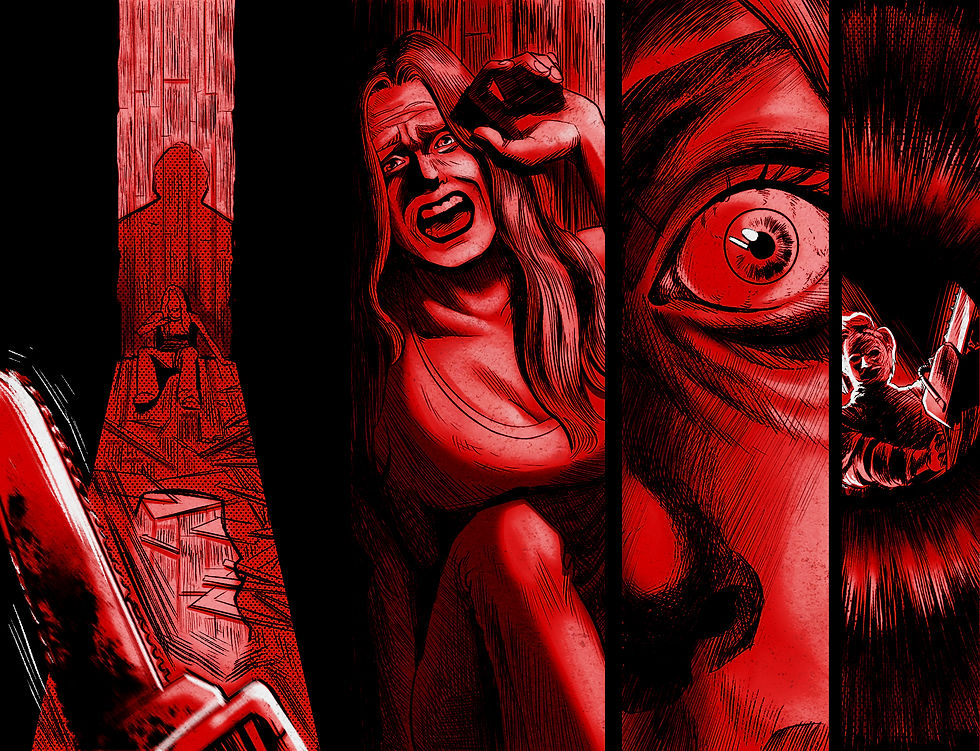Haunted by Horror Legacies
- Weston Tybor
- Nov 15, 2023
- 2 min read

What’s your favorite scary movie? While you might think of “Scream”, “Halloween” or “Texas Chainsaw Massacre (TCM)”, I’d be shocked if you answered with one of their modern additions, especially compared to recent stand-alone horror. The originals established the horror genre but their sequels feel half-baked in their attempt to contemporize. Many franchises remain stuck in the tropes and themes their predecessors established, unable to compare to present-day original horror.
A substantial amount of horror movies released in the last decade are slower-paced than what was previously the norm. The backstories and character development are deliberate. The kill counts are smaller, but the dialogue and motivations are stronger. As shown in “Get Out” through the storyline revolving around racial oppression. Despite its heavy tensity, the first kill occurs at ninety minutes into the film. “The Haunting of Bly Manor” is rooted in themes of homophobia with a kill count of four people over the show’s eight hours. Modern horror comments on prevalent issues, modeling real-life fear.
Although the movies mentioned in the previous paragraph are psychological horror, modern slasher films are intact. “X,” “Happy Death Day (HDD),” “It Follows,” and “Cabin in the Woods (CitW)” are all modern slashers that scored a minimum of 70% with critics via the movie rating website Rotten Tomatoes. Slashers, a sub-genre known for its simplistic themes, have developed nuance. “X” and “It Follows” deal with themes of sexuality and purity culture. “HDD” has a rare theme of optimism, while “CitW” satirizes horror. These slashers maintain gore and elevated themes, something modern franchises cannot provide.
Although the original “Scream” sought out to critique the genre, it evolved into the movie it was satirizing. The comedy in the new franchise takes a backseat to plots that require a certain suspension of belief that the original mocked. Gone is the critical commentary that made the original notable, while what remains are pre-established tropes. The original shocks the audience when the main character’s boyfriend is revealed to be the murderer because it subverted expectations set by prior slashers where the killer is unrelated to the victims. However, in “Scream” (2022) when the killer is unmasked as the main character’s boyfriend, the reveal feels predictable. Through relying on the scare used thirty years prior, “Scream” (2022) exhibited an inability to create an original storyline and thus to adapt to a modern audience.
Other modern franchises like “Halloween” and “TCM” are uninventive, introducing characters solely to get killed by the same villain. Audiences are evidently sick of these reused tropes as the newest “Halloween” scored 39% on Rotten Tomatoes. Similarly, “TCM” (2022) scored 31%. The gore is intact, but the ability to impress audiences isn’t.
Original horror entertains audiences because everything is unexpected; however, franchises are built on being formulaic. What made the original movies in these franchises alluring was the unique villains. The horror was built on the unknown, unfamiliar killers. By overusing these characters/tropes, these modern additions lost the edge the original established by avoiding adapting to the changing genre. New additions to horror franchises cannot add depth to the genre like modern, original horror can.
Also, can Michael Myers just die already?
-
Art by Minju Kim




Comments